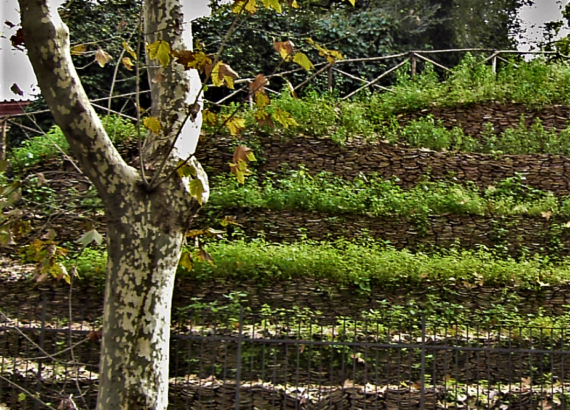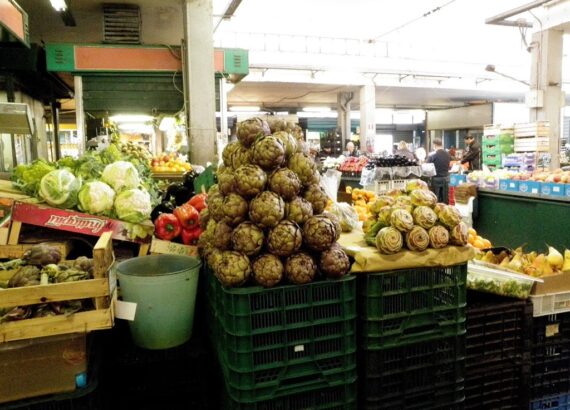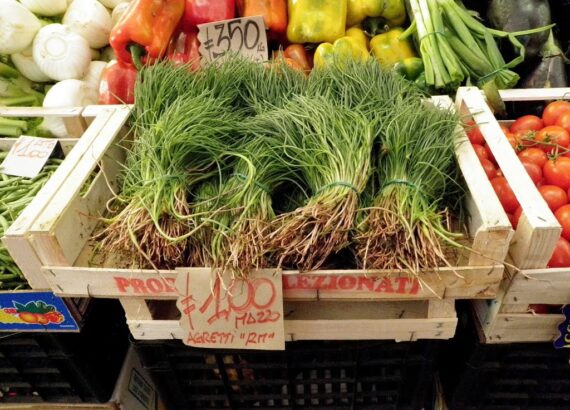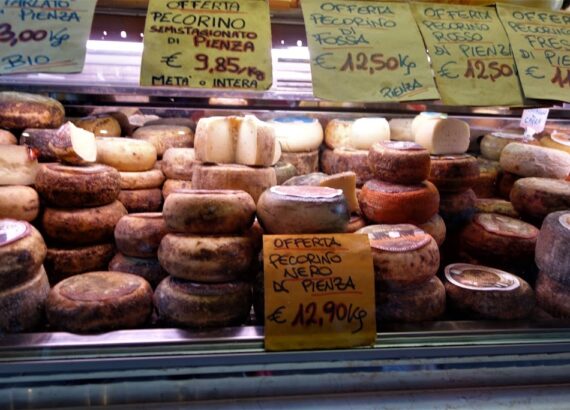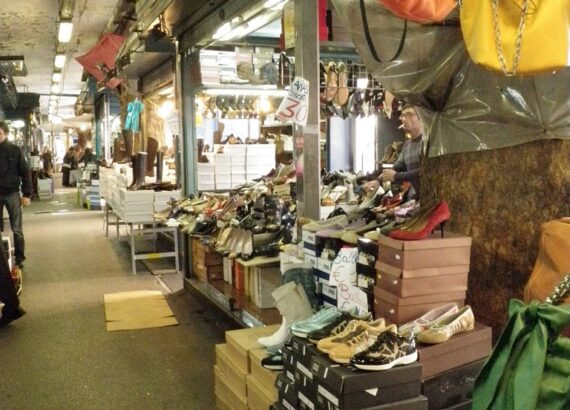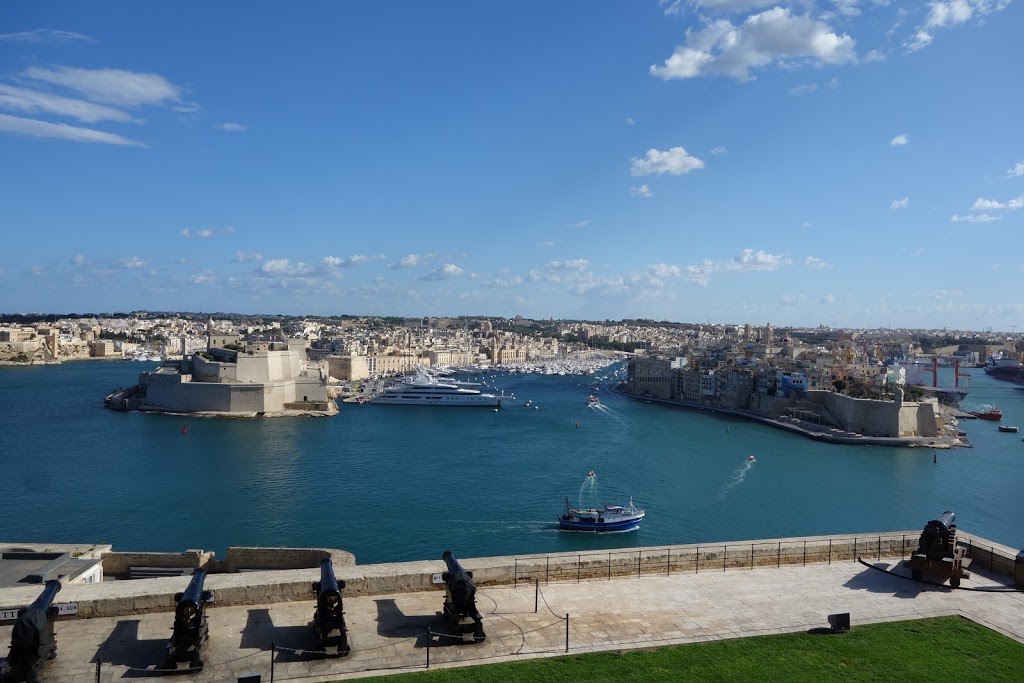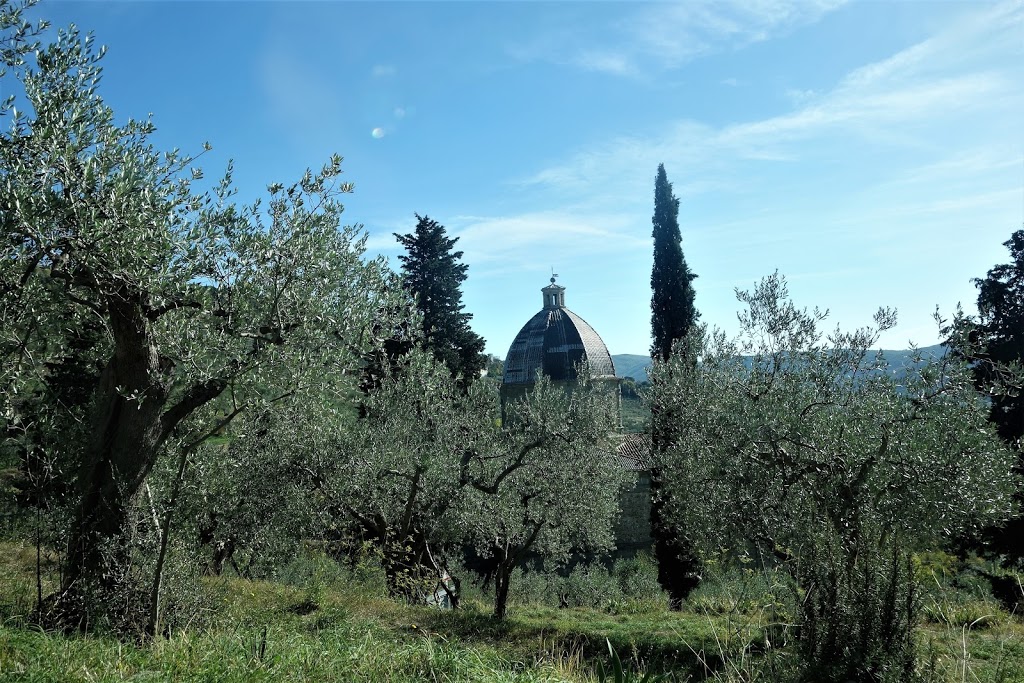When I lived in Rome, my husband and I did much of our weekly shopping on Saturdays. During the week Glenn bought our vegetables at a stand set up on the sidewalk near our apartment where an old woman sat on a stool trimming artichokes while her husband helped shoppers select the freshest tomatoes. Our usual weekly shopping was done at a local supermarket where the eggs and milk were un-refrigerated, and there were dozens of kinds of pasta lined up on the shelves.
Once a month we trekked to the covered market in Testaccio, a working-class area full of traditional Roman restaurants because it was located near the slaughterhouse where organ meats (the quinto quarto or 5th quarter) had been inexpensive in the past. The abbatoir is now an arts center but still maintains the disconcerting statue of a bull meeting his end looming over the main gate. The surrounding neighborhood is named for Monte Testaccio, a 100 foot-high terraced hill made of broken amphorae that originally contained oil, wheat and other commodities imported to ancient Rome. The newest additions to the pile are dated to AD 140.
Wandering past merchants calling me to look, taste or smell their seasonal fruit and vegetables was a welcome part of the Testaccio experience. The open-sided market covering an entire city block was much more appealing than looking at food neatly arranged in the cavernous and deoderized supermarket with deadening fluorescent lights and dearth of human interaction. In summer the market aroma of mixed seafood announced its availablity a block away, but the sweetness of ripe grapes and figs compelled a much closer sniff. In winter, both merchants and shoppers were bundled up but the noise level remained as intense discussions about quality and price for seasonal treats went on unabated.
I tried to stick to my shopping list but frequently bought more than we needed, unable to resist the seasonal giant green grapes, figs bursting with flavor, fresh porcini mushrooms, artichokes, or agretti.
Then there was the cheese: fresh mozzarella was swimming in milky liquid ready for a Caprese salad for lunch, or small rounds of semi-staginato pecorino, caciocavallo and giant wheels of parmigiano.
Next came meat or fish. Our shopping bags were soon stuffed.
The bustling atmosphere took my mind back into history, to visualize an ancient Roman housewife being harangued by vendors as she tasted a grape, tested a melon for ripeness, and bargained for bread and rough red wine. Or maybe a house slave belonging to a rich matron was looking for stinky fermented fish sauce called garum, roasted parrot, salted jellyfish, oysters, ostrich, or tiny songbirds to be eaten in one crunchy bite. Perhaps dormice served with honey was on the menu for the banquet that ancient Saturday evening. Maybe some shopkeepers shouted out Emperor So-and-So always served his mice with the vendor’s acacia honey. (Today’s shoppers often see stalls with a picture of Padre Pio, a favorite Roman saint, as a recommendation.)
But whoever the shoppers were in ancient times, they didn’t come home with chocolate, squash, tomatoes, or coffee. Can you imagine Italian food without these delights? The consummation of the marriage of Pasta and Tomatoes was surely the most inspired culinary hookup ever.
After my own food shopping (minus garum and songbirds) was finished, I couldn’t resist heading to the shoe stalls along one side of the market. The stalls were a goldmine because they sold the previous year’s shoe styles for bargain prices. I thought that shoes were a peculiar inclusion in a food market until I recognized that they were a staple as important as pasta and vegetables since the dawn of Italian history. One memorable fresco in a museum in southern Italy depicts Venus wearing a pearl necklace, red shoes and nothing else. It was probably painted around the fifth century BC but it was easy to visualize a more modern Roman mistress in the same attire. Studying the variety of sandals on Roman statues could take a lifetime. Romans could buy shoes during the Second World War when Italian troops were fighting in snow without boots. Even a recent pope was concerned with shoe styles, favoring red ones like ancient emperors.
Alas, we no longer live in Rome but never miss the markets when we return on holiday. And, the old fragrant market has been replaced by a sanitary enclosed version. But it still has shoes.
All photos except Monte Testaccio by the author
Photo of Monte Testaccio is from Wikipedia Commons
TAGS

